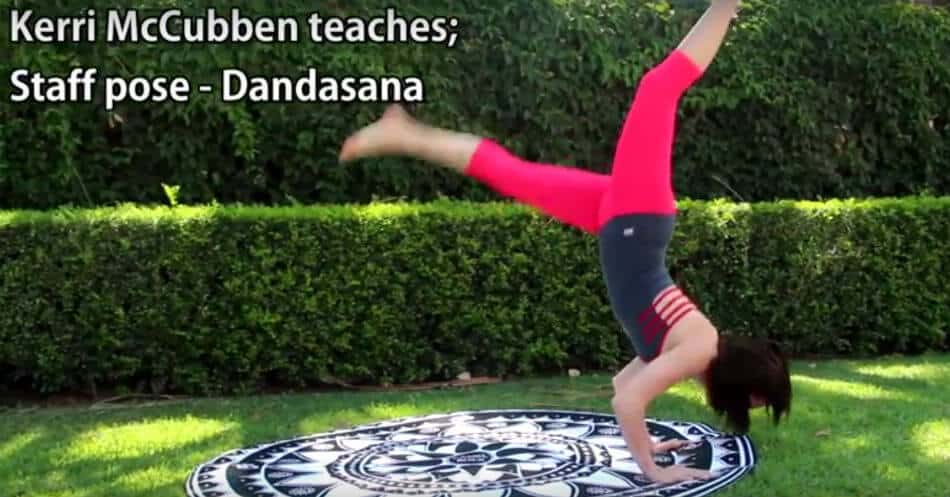- in Fitness Training by Ana Maria

Dandasana; Because You Need a Good Foundation.
Dandasana looks really simple, but it's important to make sure that you're doing it the right way, because it is the foundation of all seated poses.
The name comes from sankrit, and it's meaning is; Danda "stick" Asana "posture". Read more here.
It's so easy for your every day posture to fall into a habitual forward slump. Most of us suffer from poor posture, and staff pose helps correct that for us.
When the spine is straight and shoulder back, our breathing naturally becomes deeper and more regular. The nervous system will become relaxed and the mind and body are in greater alignment and harmony.
Regular practice of Dandasana will give you improved posture, and if you've had any discomfort sitting or standing for long periods it will help improve that as well. So it's a great regular asana for anyone slaving in the office!
Some benefits of Dandasana (staff pose)
- Improved posture
- Stronger back muscles
- Stretches the spine
- Stretches through the shoulders and chest
- Can help alleviate back or sciatic pain
- Improves core strength
- Prevent tiredness of the feet and calf muscles
- Helps improve digestion
Steps
- Sit on the floor with your back straight and extend your legs out in front of you
- Now place your palms next to your hips flat on the floor.
- Press your glutes into the floor and point the top of your head up to the ceiling to lengthen and straighten the back.
- Inhale to lengthen your spine
- Keep breathing normally, and hold the pose for about 5 breaths or 30 seconds.
Tips
- Keep you heals in line with your hips
- Engage the soles of your feet, by pointing your toes back towards your body
- Draw your thigh bones in together and down towards the floor
- Think about lengthening the danda (staff) spine
- Draw your shoulder blades back towards each other
- Never flatten or round the lower back
If you've got really tight hamstrings you might find Dandasana difficult to do at first. Try it sitting with your back up against a wall, or sit on a few blankets or books to elevate you a little more.
Advanced Tips
- Take the pose into a forward bend; Known as Pashimottanasana
- Try challenging yourself to hold the pose for longer, keeping your legs fully engaged.
Seated staff pose is a great asana to include as part of your regular yoga practice. If you are looking to strengthen your core, you can even try doing it while you are sitting watching TV or reading.
For more easy foundation yoga poses check out 50 beginner yoga poses with benefits.



